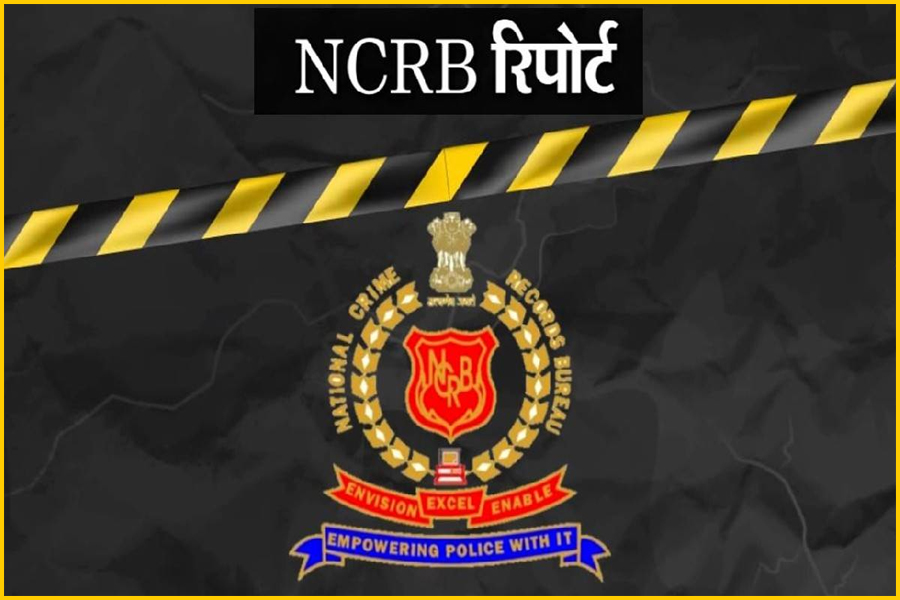NCRB Report 2024: India’s diverse social landscape presents a complex picture when it comes to public safety. The National Crime Records Bureau (NCRB) serves as the country’s primary source of crime data, offering valuable insights into state-wise trends and vulnerabilities. From urban centers like Delhi grappling with violent street crimes to digitally advanced states facing cyber threats, each region reflects unique law and order challenges. This article explores the seven regions with the highest crime rates based on the latest NCRB report. By decoding these patterns, we aim to highlight structural issues and drive meaningful discussions around justice and reform.
Understanding Crime Metrics in India
India’s crime statistics offer critical insights into the social, economic, and administrative challenges affecting public safety. The National Crime Records Bureau (NCRB) annually publishes data detailing state-wise and category-wise crime occurrences. These statistics are more than just numbers; they reveal patterns of law enforcement effectiveness, socio-political unrest, and economic disparities.
Crime rate is calculated based on the number of cognizable crimes per one lakh population, which provides a more accurate reflection than absolute case counts. While populous states like Uttar Pradesh report higher total crimes, smaller states may record more crimes per capita. Therefore, analyzing both total cases and crime rate is essential to grasp the real picture.
Crime categories include murder, rape, theft, cybercrime, and crimes against women and children. This article focuses on states with the highest reported crime rates and explores underlying causes.
Delhi: The Crime Capital in Terms of Crime Rate
Delhi, India’s national capital, consistently records the highest cognizable crime rate among all states and union territories. As per NCRB’s latest report, Delhi’s crime rate exceeds 1,500 crimes per one lakh population, far above the national average. Urban density, rapid migration, economic disparity, and socio-political activism contribute to its elevated statistics.
The city’s unique status as a union territory with both state and central administrative functions leads to varied jurisdictional overlap, which sometimes hampers swift justice delivery. Major categories of concern include crimes against women, street-level crimes such as snatching, and property-related offenses.
Despite heavy police presence and technological surveillance initiatives like CCTVs and predictive policing, challenges in controlling crime persist. Public transport zones, poorly lit areas, and slum clusters are often hotspots. On the flip side, greater awareness and reporting transparency in urban populations also partly inflate numbers. Still, Delhi’s crime rate remains a persistent issue needing multi-tiered reforms.
Kerala: High Literacy, Yet High Crime Rate
Kerala presents an intriguing paradox: despite its stellar literacy rate and progressive social indicators, it consistently ranks high in crime rate. NCRB data shows Kerala recording over 700 cases per one lakh population, placing it among India’s top crime-heavy states. Experts suggest that higher reporting, widespread legal awareness, and lower social stigma are key reasons behind these elevated figures.
Citizens are more willing to file FIRs, especially for cybercrime, domestic violence, and financial fraud. Crimes like property disputes, substance abuse, and sexual offenses are notable in urban pockets like Kochi and Thiruvananthapuram. The state also witnesses considerable political activism and protests that occasionally lead to clashes or vandalism, adding to the crime statistics.
While Kerala’s law enforcement agencies are generally efficient, the rising trend demands more robust preventive strategies like community policing, digital monitoring, and mental health support. Thus, Kerala’s numbers often reflect civic engagement more than deteriorating law and order.
Uttar Pradesh: High Volume, but Not Always High Rate
Uttar Pradesh often tops charts for the total number of registered criminal cases, especially in grave categories like murder and rape. However, due to its vast population base, the per capita crime rate remains relatively lower, averaging below the national rate. NCRB reports show around 250–300 crimes per one lakh people in UP. Still, the absolute volume-particularly of crimes against women, dalits, and political dissenters-remains alarming.
Land disputes, honor killings, caste-based violence, and rural lawlessness are prominent in regions like Bundelkhand and Purvanchal. While major cities such as Lucknow, Varanasi, and Noida benefit from improved law enforcement and surveillance, many rural pockets suffer from under-policing and slow judicial response.
In recent years, the UP government has launched campaigns focusing on women’s safety (e.g., Mission Shakti), digitized FIRs, and expanded forensic infrastructure. However, social reforms and better community engagement are needed to translate policy into safer neighborhoods.
Haryana and Madhya Pradesh: Gendered Vulnerability
Both Haryana and Madhya Pradesh feature prominently in crimes against women and children. NCRB data reveals that MP leads in rape cases, while Haryana shows high rates in dowry deaths and assault on women. Per capita crime rates in both states hover around 350–450 cases per lakh population.
Cultural factors, entrenched patriarchy, and slow judicial processes contribute to these grim statistics. Despite economic progress, many rural pockets remain steeped in archaic gender norms. Campaigns like “Beti Bachao, Beti Padhao” aim to improve gender equity, but ground reality often contradicts policy intent. In urban areas like Bhopal and Gurgaon, cybercrime targeting women-including cyberstalking and harassment-is on the rise.
Lack of safe public spaces, insufficient female police personnel, and reluctance to report further aggravate the issue. These states highlight the urgent need for gender-sensitive policing, fast-track courts, and compulsory gender education in schools.
Cybercrime Surge: Maharashtra and Telangana in Focus
With the digital ecosystem booming across India, cybercrime has emerged as a major concern. Maharashtra and Telangana are leading contributors to cybercrime statistics-including online fraud, phishing, identity theft, and sexual exploitation. NCRB reports a sharp spike of 24.4% in cybercrime cases year-over-year.
Hyderabad and Mumbai, being tech hubs, face daily challenges from ransomware attacks, cryptocurrency scams, and dark web activities. Young populations, internet penetration, and lack of digital hygiene make citizens vulnerable. While both states have cybercrime units and forensic labs, the fast-evolving nature of digital threats demands constant upgrades and public education.
Awareness campaigns, cyber helplines, and school-level interventions are being deployed, yet the volume remains high. The emphasis should now shift toward predictive cyber modeling, ethical hacking initiatives, and stricter data protection laws. In the future, cybercrime may rival physical crime if not managed proactively.
Safe Cities & Declining Crime Zones
Not all data paints a grim picture-several cities and states are showing improvements in crime control. Kolkata has ranked as India’s safest metro for three consecutive years based on NCRB statistics, with minimal violent crime and excellent civic surveillance. Cities like Pune, Chandigarh, and Shimla also boast lower crime rates and efficient law enforcement.
These regions invest in digital policing, community awareness, and inter-agency coordination. Important factors include visible police patrols, responsive helplines, citizen apps, and proactive local governance. North-Eastern states like Sikkim and Mizoram report low crime rates, partly due to cultural cohesion and smaller populations.
These areas can serve as models of localized peacekeeping and community engagement. The lesson is clear: data-driven interventions, decentralization of crime control strategies, and public participation can significantly reduce crime. As India urbanizes further, replicating these models across high-crime zones is the path forward to ensure equitable safety for all.
ALSO READ-AQI Near Me: India’s Air Quality Trends in July 2025
Disclaimer: The articles, videos, and news published and shared on Theconnect24.com covering topics such as religion, astrology, health, yoga, history, mythology, and others are intended solely for general informational purposes. These materials are sourced from various references, and Theconnect24.com does not guarantee or verify their accuracy, completeness, or authenticity. Viewers are strongly advised to seek guidance from qualified experts or specialists before practicing, following, or experimenting with any information related to astrology, health, or similar subjects. This content is presented purely for the interest of viewers and does not carry any scientific validation or evidence.



